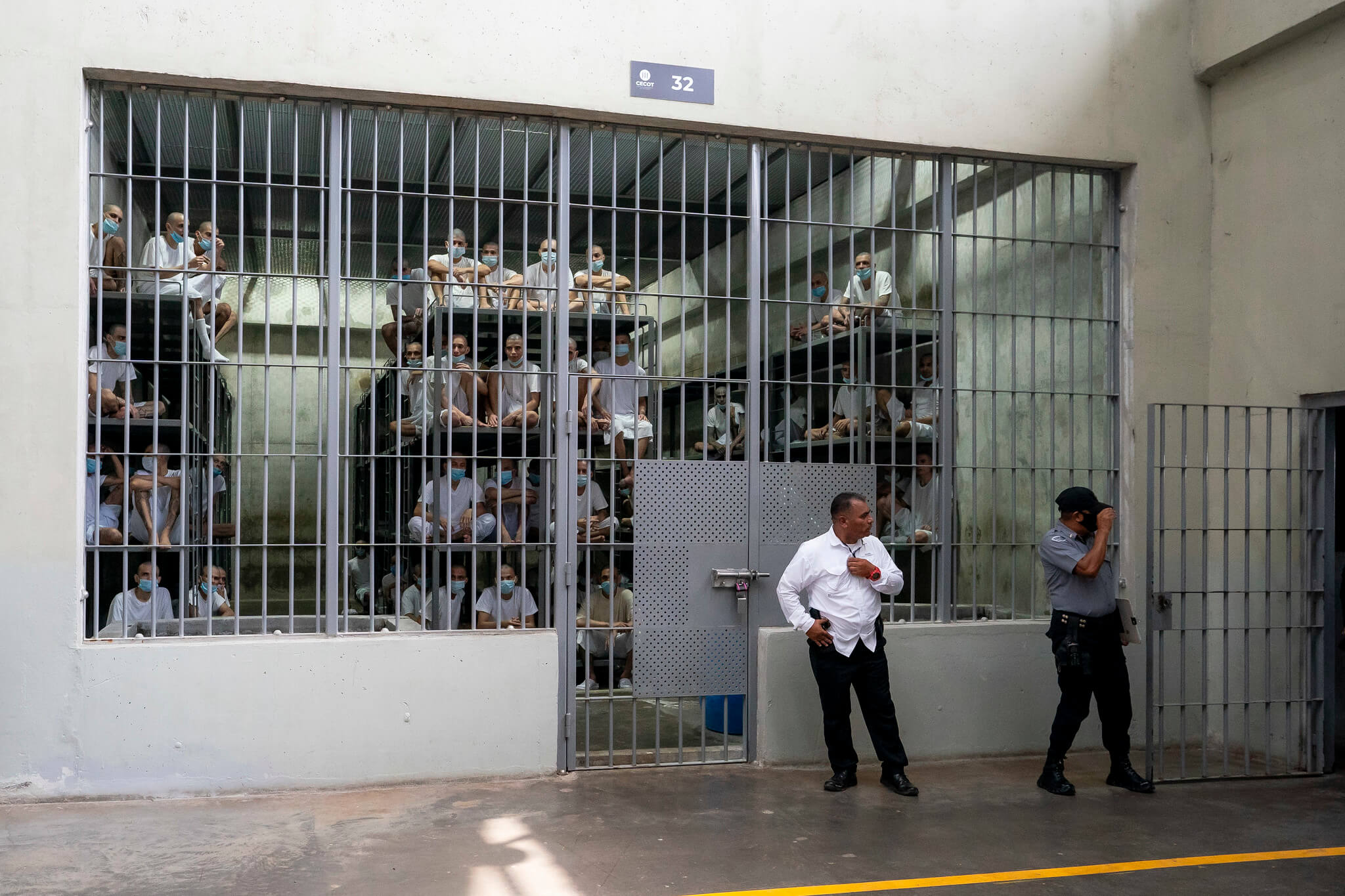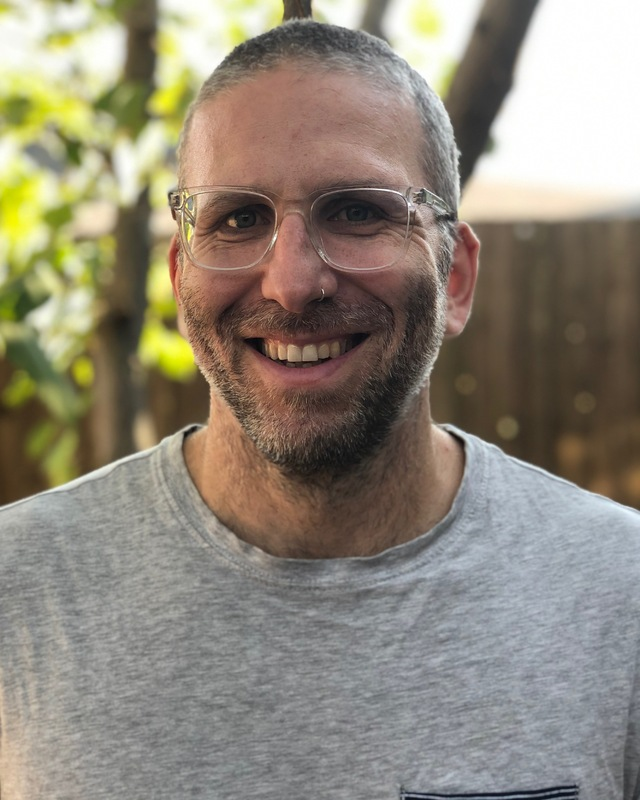Class Actions and the Alien Enemies Act

Published by The Lawfare Institute
in Cooperation With

Removal under the Alien Enemies Act (AEA) raises profound questions of government power, due process, and human dignity—so people sometimes wonder why skirmishes over class action certification are consuming so much legal energy. The answer is that justice is often bound up with procedure. And a federal court in the Northern District of Texas (NDTX) just created a major procedural problem when it refused to certify an AEA detainee class.
In what follows, we want to explain: (1) why AEA detainee class certification is so important and (2) why some of the ideas in the NDTX order are so troubling. (In the interests of disclosure, we have co-authored and signed an amicus brief on behalf of class action and habeas professors in this case.)
The Trump administration is trying to remove noncitizens who it alleges to be members of a Venezuelan gang, Tren de Aragua (TdA). The president invoked AEA removal authority in a proclamation asserting that TdA is an arm of the Venezuelan government that is “inva[ding]” or making a “predatory incursion” into the United States. The Supreme Court later held, in J.G.G. v. Trump, that AEA detainees are entitled to challenge the legality of their removal under the Act by seeking a writ of habeas corpus. The catch: Under the “immediate custodian rule,” detainees must ordinarily mount habeas corpus challenges in the federal districts where they are detained. In other words, the AEA detainees can’t all sue together in DC; instead, they have to bring their suits in the districts where they are being held.
But that doesn’t mean they have to bring their habeas challenges on an individual basis. Nothing the Supreme Court said in J.G.G. forecloses seeking habeas relief through a class action lawsuit, and no matter where the litigation takes place, class treatment remains an indispensable procedural protection. In a class action, one or more named plaintiffs sues on behalf of a class of people who have similar legal claims. And the court can certify a class action to decide common questions that apply to the class as a whole. Class actions avoid inconsistent judgments and other inefficiencies that plague individual adjudication of common issues. They can also guarantee legal representation to vulnerable class members who would otherwise have limited access to counsel.
Habeas corpus claims often turn on individualized issues, but here there are several arguments that the administration’s attempt to detain and remove Venezuelans under the AEA is illegal as to all of them. There are at least five common issues that can be decided on a classwide basis: (1) whether the AEA proclamation is invalid for want of an “invasion” or “predatory incursion”; (2) whether the proclamation is invalid because TdA isn’t an alter ego of the Venezuelan government; (3) whether the proclamation unlawfully circumvents immigration procedures specified in Title 8 of the U.S. Code; (4) whether AEA detainees are entitled to screenings for torture; and (5) whether the government’s notice procedures are unlawful.
Class treatment is especially urgent because the Trump administration is running roughshod over vulnerable AEA detainees who lack sufficient access to counsel. J.G.G. formally entitles AEA detainees to “notice … that they are subject to removal under the Act,” and it holds that “[t]he notice must be afforded within a reasonable time and in such a manner as will allow them to actually seek habeas relief in the proper venue before such removal occurs.” The administration, however, has adopted notice practices that threaten to wipe this formal protection away. According to public filings, it is providing English-only notices to unrepresented AEA detainees—many of whom do not speak English. The notices, moreover, don’t tell the detainees that they can challenge their detentions, let alone how or when to do so. The administration is asserting authority (1) to remove detainees who don’t declare an intent to file habeas petitions within 12 hours of receiving the notice and (2) to remove those who declare intent but don’t actually file habeas petitions within 24 hours. Immigration authorities do allow attorneys to visit detainees that the attorneys can identify in advance, but they won’t provide information about other unknown detainees who may be subject to the proclamation. The ACLU, which is lead counsel in many of the AEA cases, knows of not one AEA detainee who has been able to file a pro se habeas petition. (Detainees are “pro se” when they represent themselves.)
This is where class certification matters. Upon certification, the court will appoint class counsel. That lawyer then represents every individual in the class, which means that, if the administration wants to deport any one of them, it will first have to notify trained legal counsel capable of invoking appropriate rights and remedies. The problem is that J.G.G. wiped out a nationwide class action, forcing lawyers to seek district-by-district certification of AEA habeas classes. The AEA detainees quickly obtained class certification in the Southern District of Texas, the District of Colorado, the Western District of Pennsylvania, and the Southern District of New York. (On May 13, the Western District of Pennsylvania decertified the class because there were no class plaintiffs left in the district. On that same day, the Western District of Texas provisionally certified a new habeas class.)
The NDTX case, now captioned W.M.M. v. Trump, was initially filed as a class action and quickly made its way up to the Supreme Court (where it is captioned A.A.R.P. v. Trump). The emergency Supreme Court litigation culminated in an order, issued at 1:00 a.m. on April 19, instructing that the administration may not “remove any member of the putative class of detainees from the United States until further order of this Court.” Supreme Court intervention was necessary because parties had alleged (1) accelerated and imminent removal of potential class members, and (2) that the Administration was transporting AEA detainees from other districts into the NDTX—which, unlike other districts, had no injunction barring AEA removals. The Supreme Court order remains operative as long as W.M.M. remains pending there.
On Friday, May 9, the NDTX district court nonetheless denied class certification. The most obvious result is that, if the Supreme Court stay lapses, AEA detainees in the NDTX will be hostage to the administration’s wildly inadequate notice practices. The less obvious result is that the NDTX will become a jurisdictional magnet—a remedy-lite destination for AEA detainees whose removal would be harder to effectuate from other places. These practical problems are not unfortunate consequences of unavoidable law; the district court made serious legal mistakes when it denied class certification.
Understanding the magnitude of the mistakes requires a basic understanding of the class action rules. Under Federal Rule of Civil Procedure (FRCP) 23(a), any plaintiff class must: (1) be sufficiently numerous and have (2) common issues and (3) a typical representative capable of (4) adequate class representation. FRCP 23(b) requires that every plaintiff class be one of three types, and Rule 23(b)(2) is the provision applicable to classes seeking injunctive or declaratory relief. (The AEA class actions are Rule 23(b)(2) classes.) Even in the absence of Rule 23 certification, the near-unanimous position of the U.S. circuit courts is that the All Writs Act permits federal courts to facilitate analogous forms of representative litigation.
We discuss major mistakes in the NDTX opinion not only because the certification denial is important in its own right, but also because other courts might replicate its errors.
First, the district court denied class certification because it thought that individualized issues—such as whether each AEA detainee was a TdA member or otherwise removable under Title 8—would predominate over common questions. But that’s not how a Rule 23(b)(2) class action seeking injunctive and declaratory relief works. And here that’s what the petitioners are seeking: an injunction prohibiting the government from deporting them and a declaration that its invocation of the AEA is unlawful. Rule 23(b)(3), which applies to classes seeking damages (that is, money), requires courts to find that common questions predominate over individual ones, but Rule 23(b)(2) has no predominance requirement. Rule 23(b)(2) classes are instead appropriate when an indivisible remedy can provide classwide relief on any common issue. That’s what Wal-Mart v. Dukes meant when it held that Rule 23(b)(2) was appropriate “when a single injunction or declaratory judgment would provide relief to each member of the class,” and that “[p]redominance [is] self-evident” when “a class seeks an indivisible injunction benefiting all its members at once ….” It is unremarkable for courts to deal with individual issues after classwide resolution of common ones.
Second, the district court found that the claims of named plaintiffs were not “typical” of those belonging to the rest of the class because the named plaintiffs raised several issues that would require individualized, fact-specific determinations. But again, that’s not how the typicality requirement works for Rule 23(b)(2) classes. Rule 23’s typicality requirement ensures that the self-interest of the class representatives aligns with the interests of the class members they are supposed to represent. In General Telephone v. Falcon, the Supreme Court explained that the “class representative must be part of the class and possess the same interest and suffer the same injury as the class members”—so that, in pursuing their own claims, the named plaintiffs will advance the class’s interests. The NDTX actually recognized that the named plaintiffs’ claims are typical of the class’s challenge to the AEA proclamation’s validity, and that’s all the typicality that Rule 23 requires. Class action treatment of a common issue is not barred just because it might be resolved in a way that requires a court to reach individual issues later.
Third, the district court insisted that it was actually protecting the AEA detainees, because classwide treatment might preclude subsequent litigation of individual issues. In other words, the court was worried that the detainees might lose their chance to bring their own claims or raise individual issues (like denying affiliation with TdA) if they were members of a class. But that’s wrong too; there is simply no threat of preclusion for the district court to protect against. It is black-letter law, as captured by the leading class action treatise, that class treatment of a common issue only precludes relitigation of that issue: “[A] judgment in a class action does not preclude later lawsuits by class members concerning individualized claims.” And even if there weren’t a class-action rule against preclusion, there is still no preclusion in habeas cases. A habeas judgment in an AEA detainee case does not preclude the detainee from bringing subsequent habeas challenges to that same detention. Sanders v. United States underscores just how deeply embedded the no-preclusion rule is: “[T]he inapplicability of [claim preclusion] to habeas … is inherent in the very role and function of the writ” and this “principle of our law of habeas corpus … was assumed to be the case from the earliest days of federal habeas corpus jurisdiction.”
Fourth, the district court expressed serious doubt about whether “injunctive and declaratory relief [are] available in habeas cases” because, it tentatively surmised, habeas relief is for discharge only—that is, being released from detention. The district court’s language is deeply perplexing. J.G.G. specifically held that habeas could be used to review and, if necessary, prohibit AEA removal. In fact, J.G.G. indicated that the litigation had to proceed as a habeas case because it sought “injunctive and declaratory relief against the implementation of, and [detainee] removal under, the Proclamation.” J.G.G.’s insistence that habeas jurisdiction includes the power to invalidate AEA removal is no surprise because that’s well-established law. 28 USC § 2243 empowers courts to use habeas remedies “as law and justice require,” which has historically been identified as the source of habeas power to issue injunctions and declaratory relief. In 2008, in reference to national security detention, Boumediene v. Bush held that “release need not be the exclusive remedy and is not the appropriate one in every case in which the writ is granted[.]” One could just as easily quote In re Bonner, decided over a hundred years before Boumediene: “The court is invested with the largest power to control and direct the form of judgment to be entered in cases brought up before it on habeas corpus.” The district court simply confused the idea that (1) detainees must seek discharges through habeas with (2) the only habeas relief is discharge.
***
If the district court rejects the pending motion for reconsideration, then its order will make it easy for the Administration to route AEA detainees to the NDTX, where they will be unprotected by class treatment and therefore lack meaningful opportunity to challenge their AEA removal. This result stems, not from Rule 23, but from mistakenly minimizing the salience of common issues and dramatically overstating the challenges in crafting a remedy. As the Class Action and Habeas Professors Brief explains, things are actually quite simple: “TdA is either a ‘foreign nation,’ or it is not. Its American activity is either a ‘predatory incursion,’ or it is not. The President’s Proclamation either complies with the AEA, or it does not. Due process either permits removal on some quantum of notice and process, or it does not. People facing removal are either entitled to torture screenings, or they are not. These questions do not have different answers for different class members.” These AEA detention cases are quintessential examples of what Rule 23(b)(2) classes are for. And absent such class treatment, AEA detainees are at enormous risk of being sent, unlawfully and indefinitely, to a brutal Salvadoran prison.





